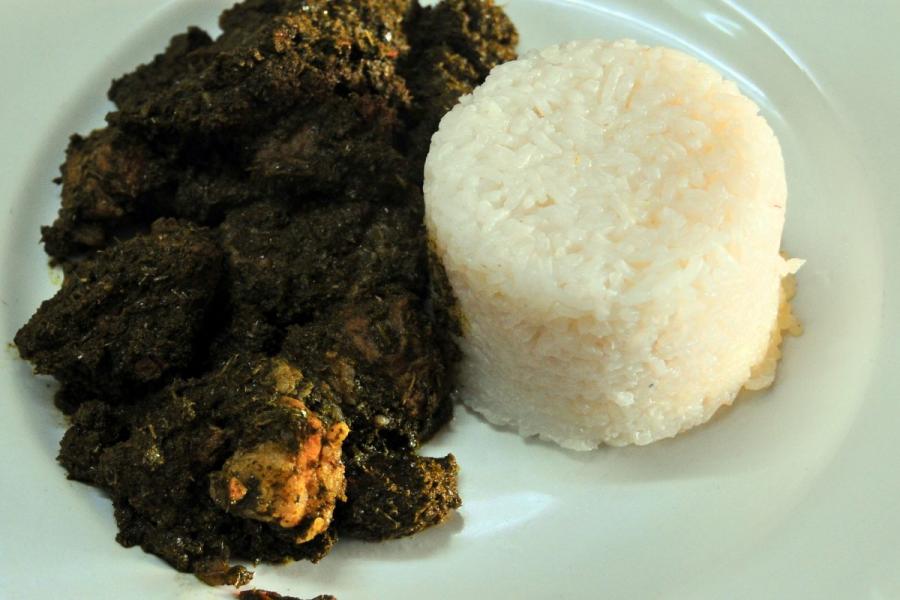Food in Madagascar
Madagascar diet offers a diverse and unique cuisine.
Madagascar food, a unique blend of Arabic, Chinese, French, African, and Indian influences, reflects the country's rich cultural diversity shaped by centuries of migration and trading. This fusion of flavors and culinary traditions makes Malagasy cuisine stand out, with rice as a staple food that is often served with a variety of meats, vegetables, beans, and other accompaniments. Of course, there are regional variations - each zone has very different vegetables, fruits, and fish available, and ingredients on hand command local recipes.
Unhappily, the most fascinating food in Madagascar can only be discovered at local homes. When on location, try to earn an invitation to a Malagasy home to sample a traditional meal by socializing with friendly local cooks, if your stay will be long enough to do the social. Console yourself if that is not possible, the country’s restaurants serve excellent French cuisine -sometimes with more colorful ingredients from the Western world point of view, such as their zebra steak and fries- and there is a good assortment of informal restaurants and market stalls where to experience some of the local food magic. Else, try some of the recipes from Madagascar at World Food and Wine.
Staple and specialty food in Malagasy cuisine
As everyone else in the world, Malagasy people have their favorite flavors. Rice, as a staple food, holds a central place in the diet of the Malagasy people. It is always present at every meal, underscoring its importance as a dietary staple. A tasty dish that exemplifies local flavors and culinary practices is one prepared with meat of zebu or fatty pork, flavored with coconut milk or crushed peanuts, typically enjoyed at lunchtime and often served with tomato achard.
Starches: rice, noodles and root vegetables
As it happens in most of the African territory, meals in Madagascar consist of less meat, more whole grain cereals and beans, and lots, lots, lots more fresh fruits and vegetables than Western meals.
This vegetable stock is ro. It may resemble bowl of hot water with the odd cabbage leaf swimming around. However, this broth is less risky to drink than local untreated water and has the added bonus of adding some extra vitamins and minerals, as any broth worth its salt should do.
Rice makes the staple of the Malagasy diet; fish, beef or chicken are just the frills on the side. A bowl of rice on its own is considered a perfectly suitable meal. In the countryside, the bowl of rice arrives together with a bowl of a very clear broth made from leafy vegetables. The traditional method of cooking rice in Madagascar involves a process where a thin layer of burnt rice is heated with water, especially when preparing Ranon'ampango, a popular local drink.
Rice is breakfast food everywhere in Madagascar. In fact, rice for breakfast, lunch, and dinner is a wholly normal food day. Malagasy people eat rice three times a day, highlighting its cultural importance and the variety in its preparation, such as either a rice soup for breakfast or dinner, or dried rice for lunch. Eating rice is rooted so deep in the land some people will claim they were not able to sleep the day they did not have a meal of rice. Rice may come with a stew made from beef, fish, chicken, or duck, or vegetables with a few spices for flavor and plain vegetables, boiled in water, will make a side dish.
Noodles are the natural option other than rice. Noodles will come steaming in a bowl either fried, with vegetables or meat, or in the shape of a Chinese broth, with vegetables, fish or meat. In a more rustic setting, root vegetables, such as manioc, and corn will complement the diet.
Cebu meat and other meat
Zebu cattle are the main source for the meat consumed, with zebu meat playing a pivotal role in traditional Malagasy cuisine. Dishes such as beans with zebu meat and the celebrated braised zebu meat (hen'omby ritra) showcase the importance and traditional methods of preparing and consuming zebu meat in Madagascar. A zebu beef stew or zebu steak, when cooked well, is as delicious as traditional beef. The lower quality beef is usually cut into small cubes, boiled in salted water with onion and garlic until really tender – so tender that it can be shredded with a fork - then cut into thin strips, and roasted until brown.
Chicken or goat is also standard fare and you will find chicken curry readily available. Pork meat is available but eating pork is taboo in many parts of Madagascar. If traveling to Madagascar, be careful where you ask for pork.
Recipes from Madagascar
To best appreciate the simple but flavorful Malagasy cuisine, it is best to try some recipes from Madagascar, such as ginger stewed beef or romavaza.
Madagascar food
Achards – a curry made from pickled vegetables, hot and spicy.
Hen’akoho – chicken or duck, usually stewed.
Hen’andrano – fish.
Hen’omby – beef.
Kitoza – beef strips, grilled and smoked untilcharcoaled and dried.
Koba – a sweet made from peanut, rice and sugar.
Lasary – Malagasy version of coleslaw, shredded cabbage dressed with mayonnaise, but it can also be prepared with vinegar or curry.
Masikita – grilled beef kebabs.
Mi sao – fried noodles with vegetables or meat.
Mofo menakely – doughnut.
Rano vola – rice water.
Ro – light broth made with leafy vegetables.
Sambo – samosa, a pastry filled with ground meat.
Soupe Chinoise – clear broth with noodles, vegetables, meat or fish.
Steak frites – steak and fries.


